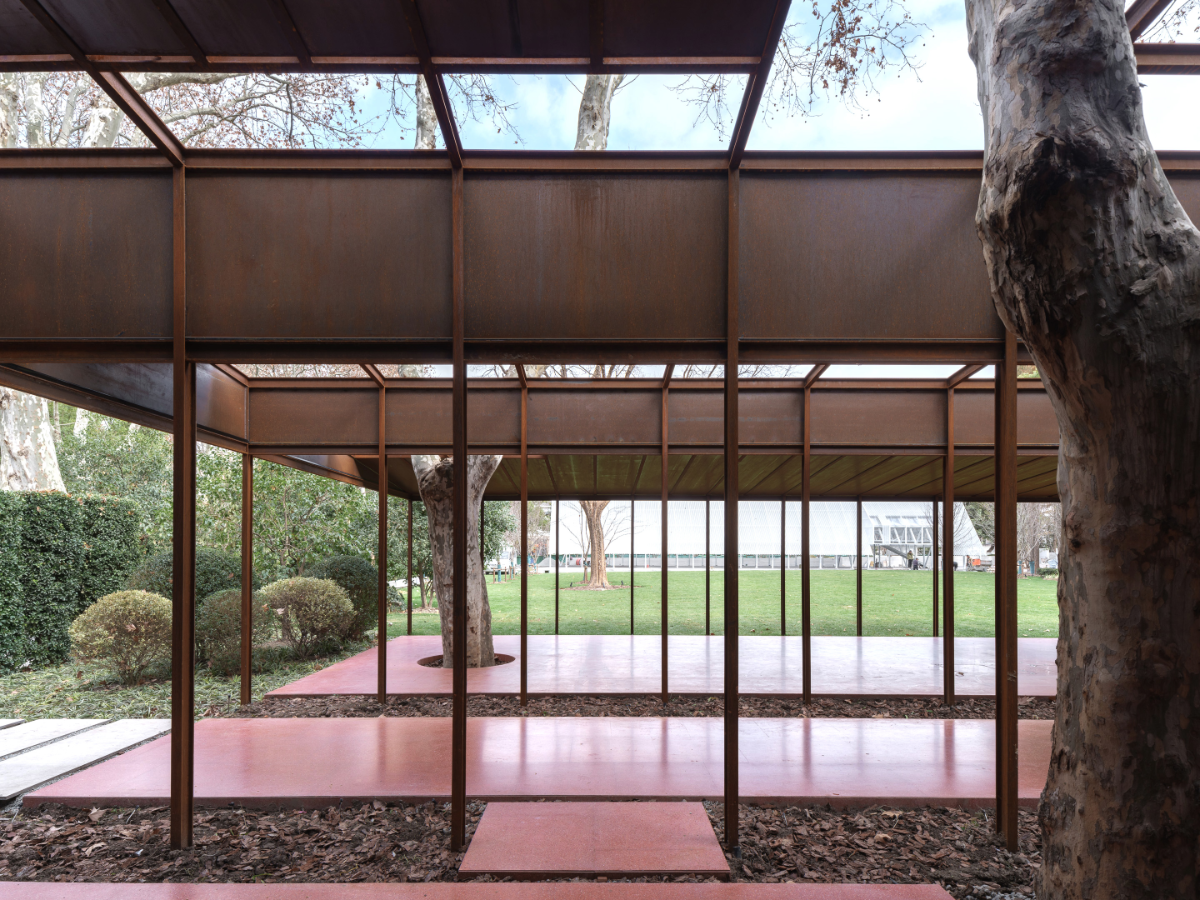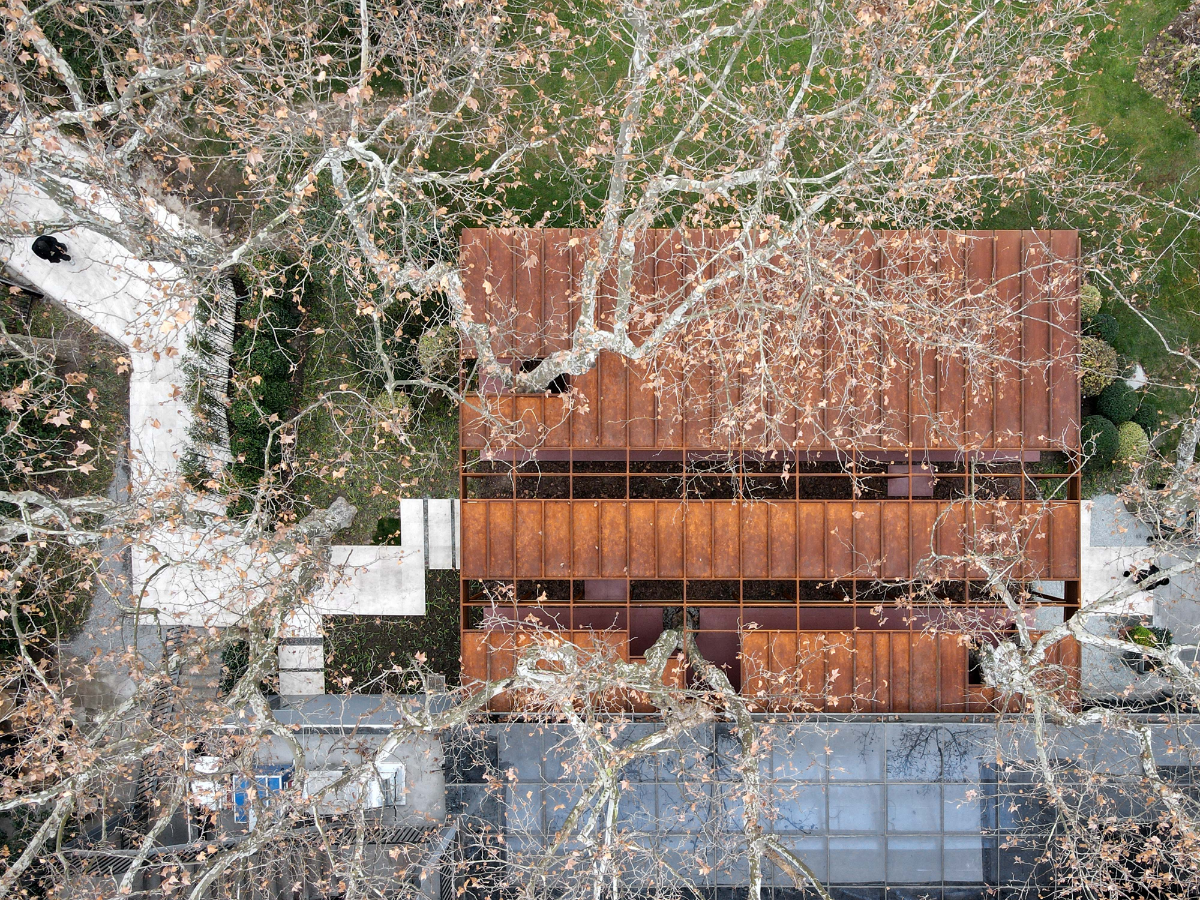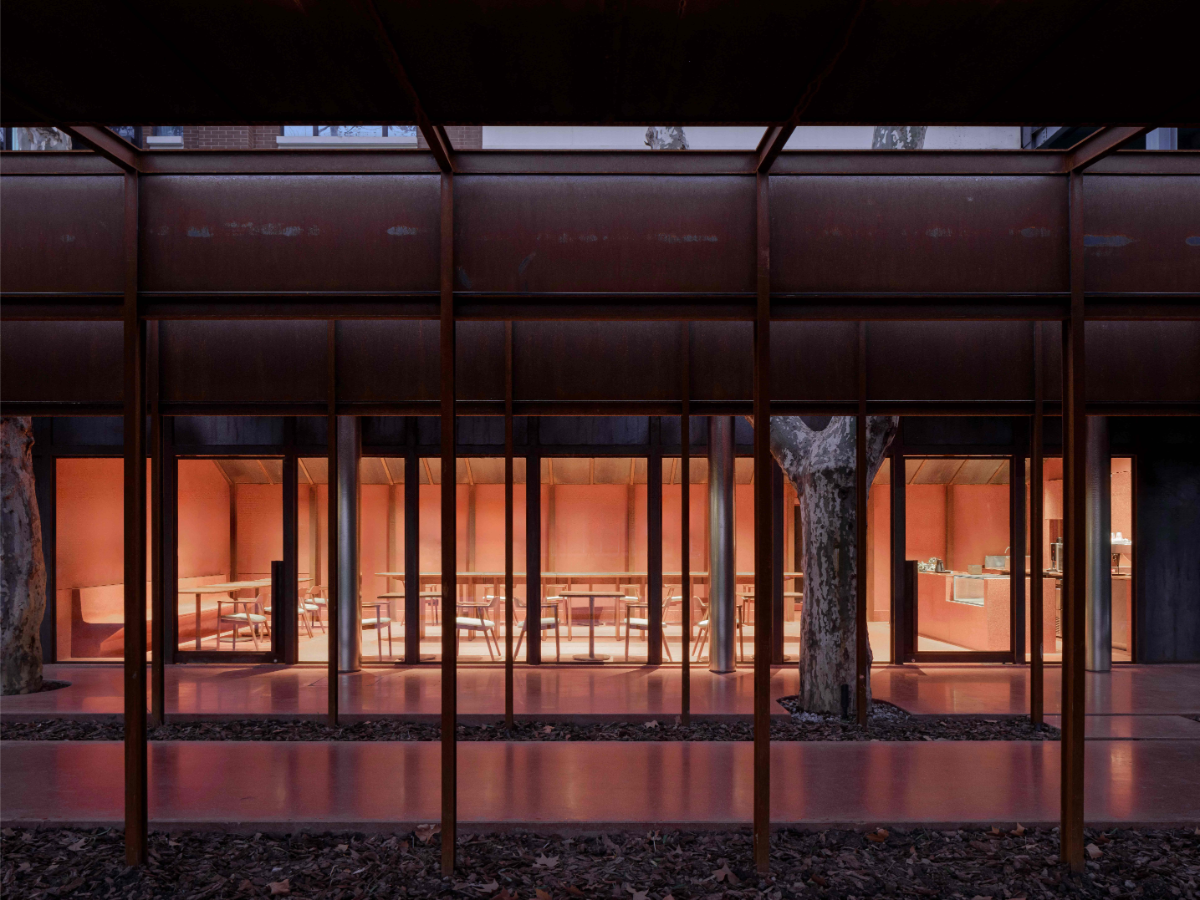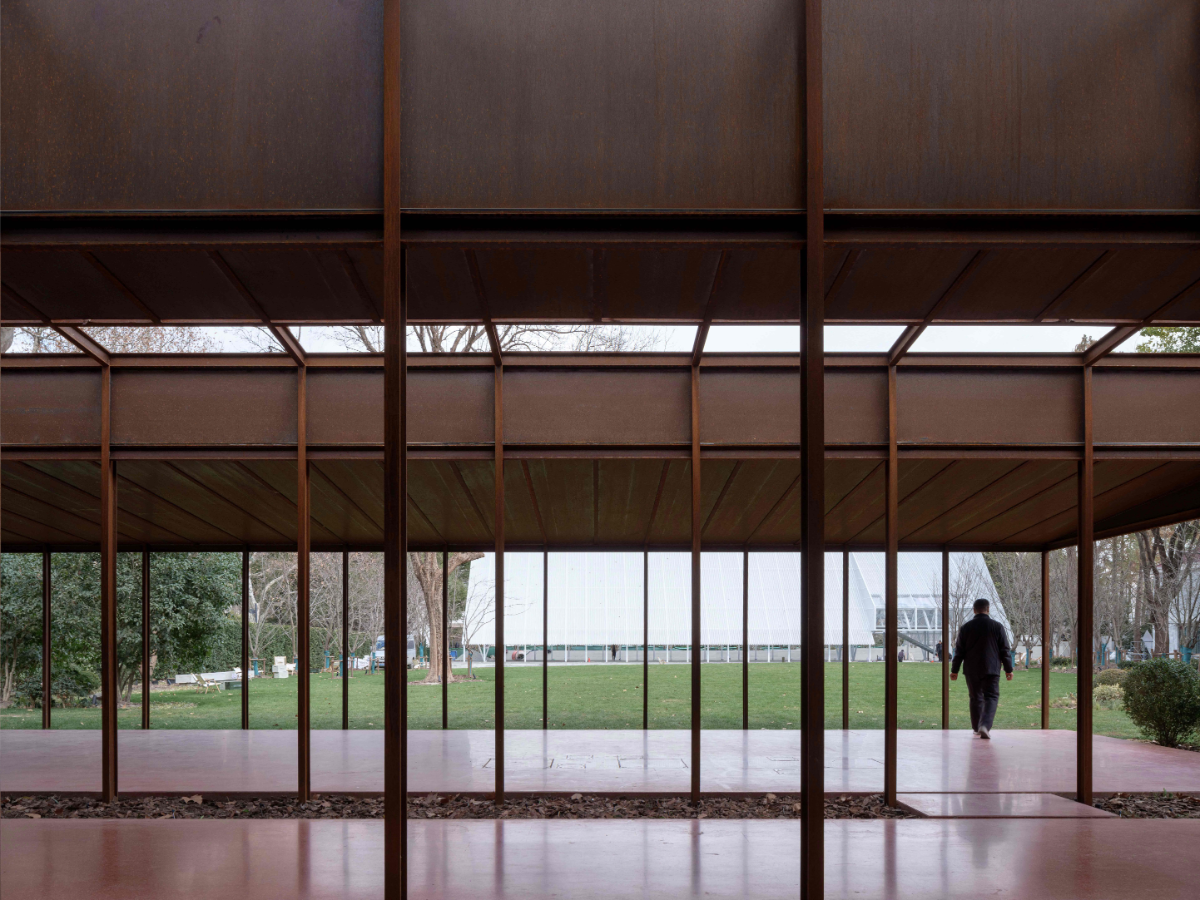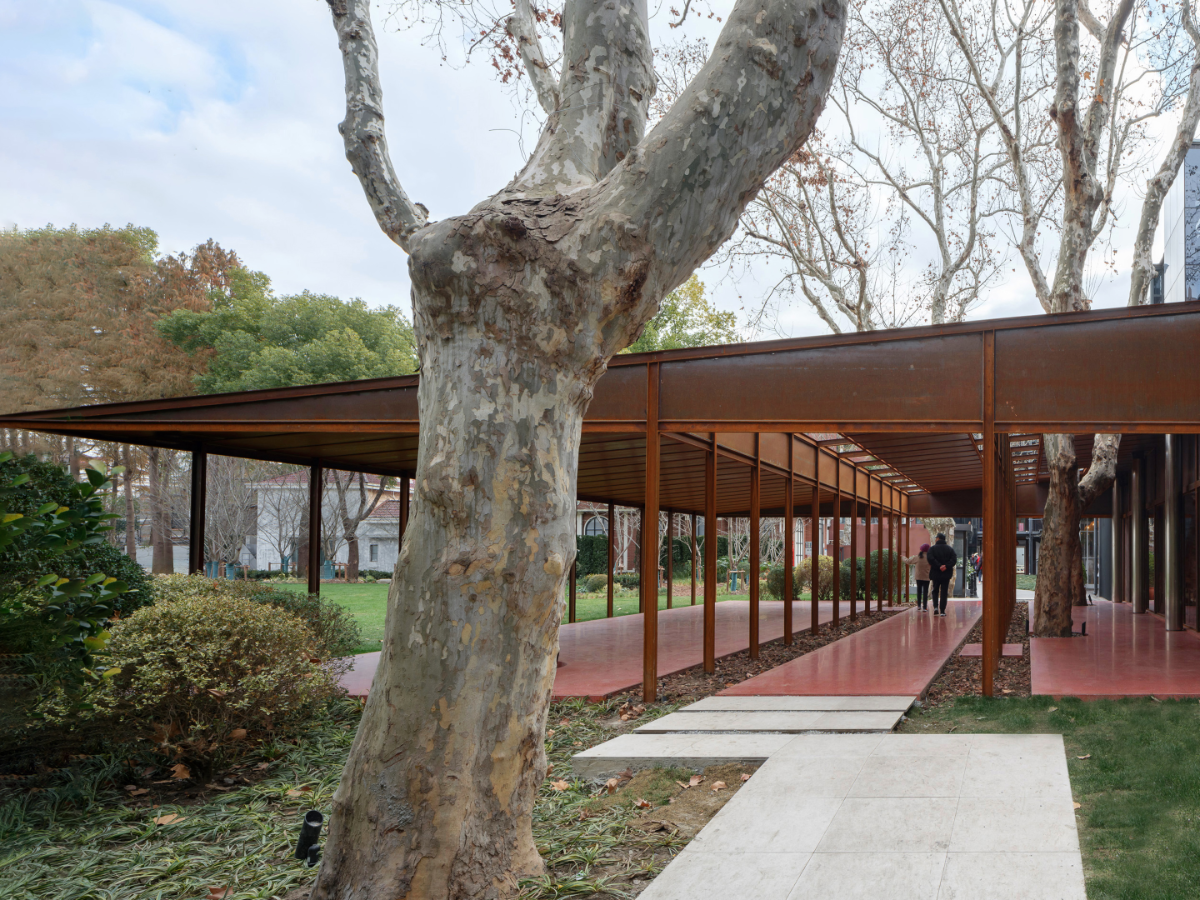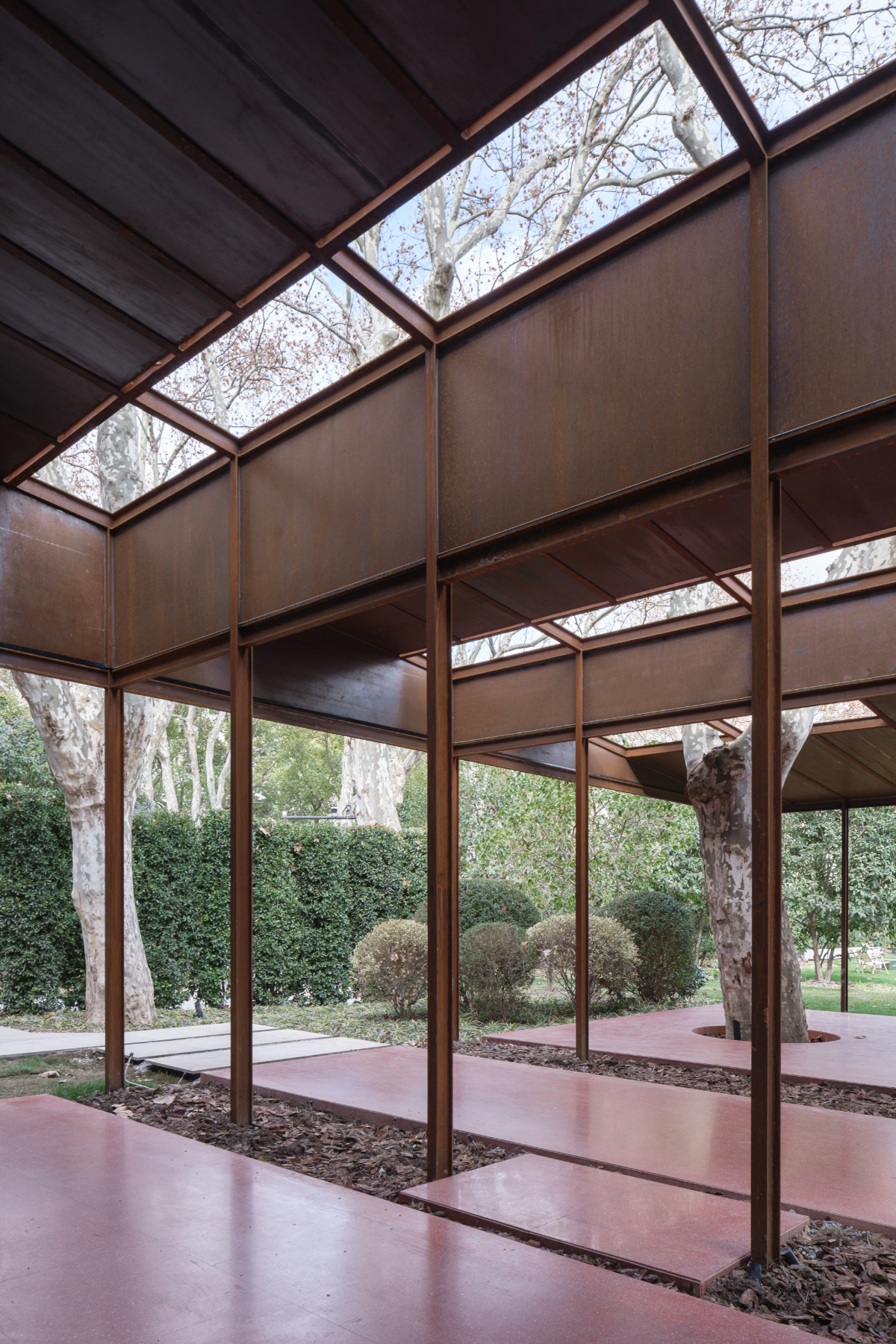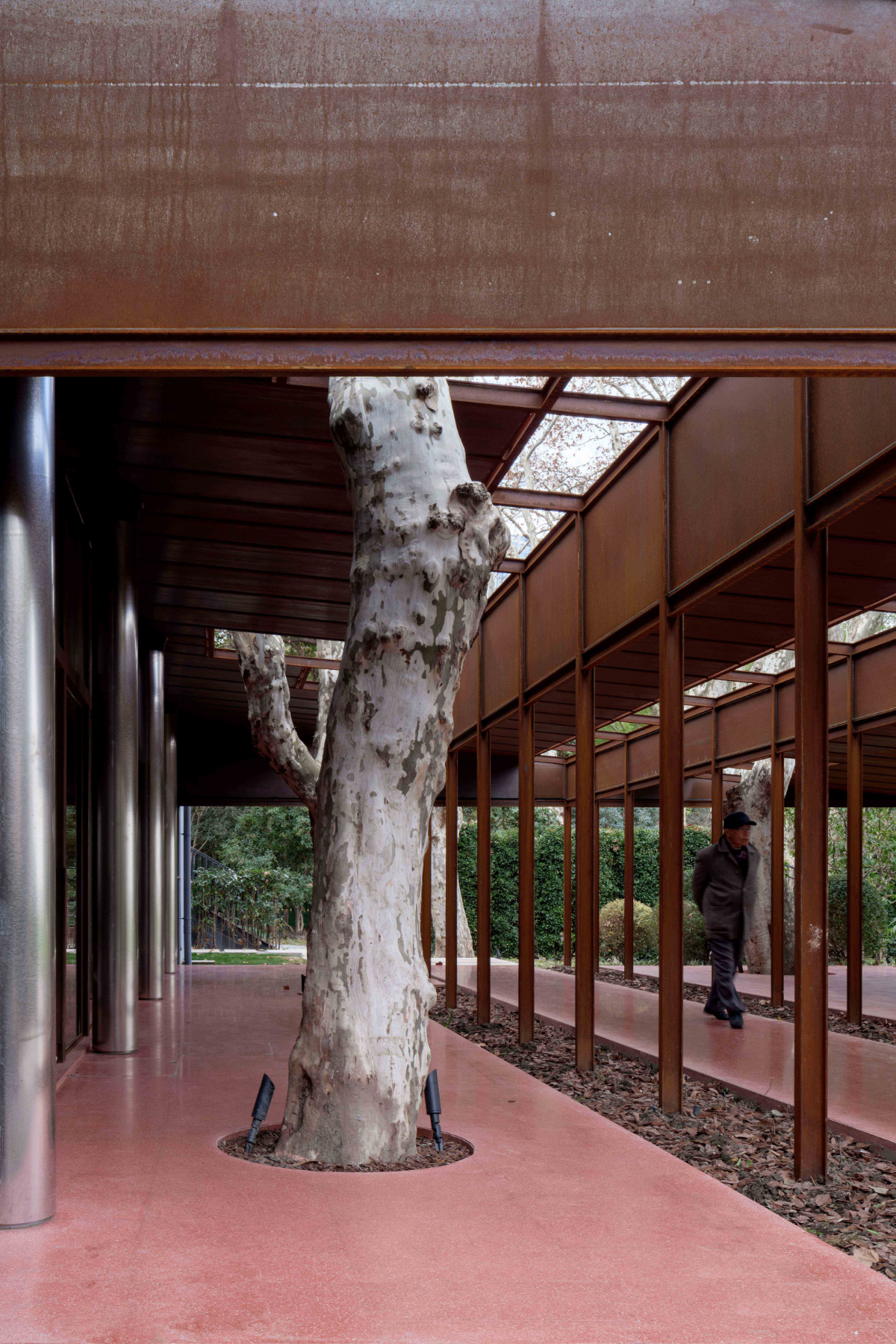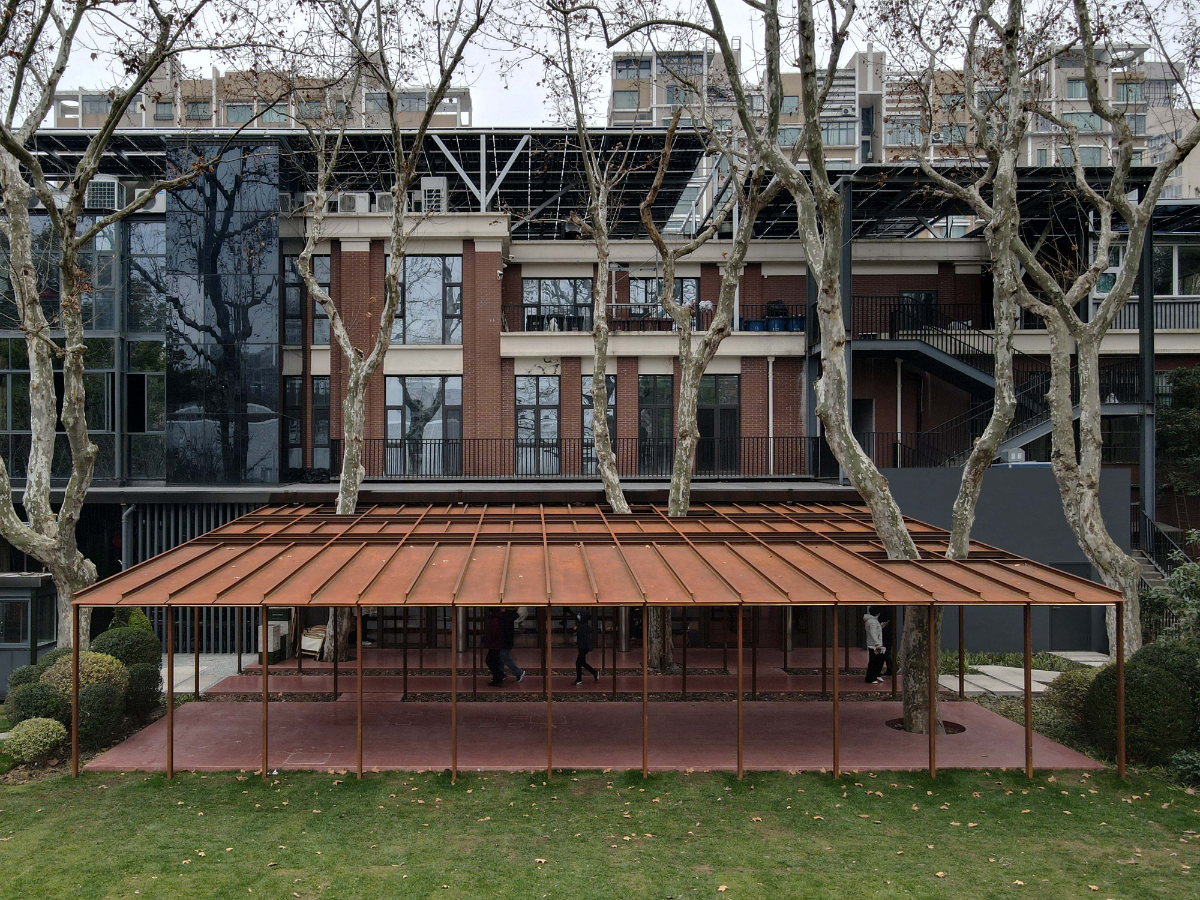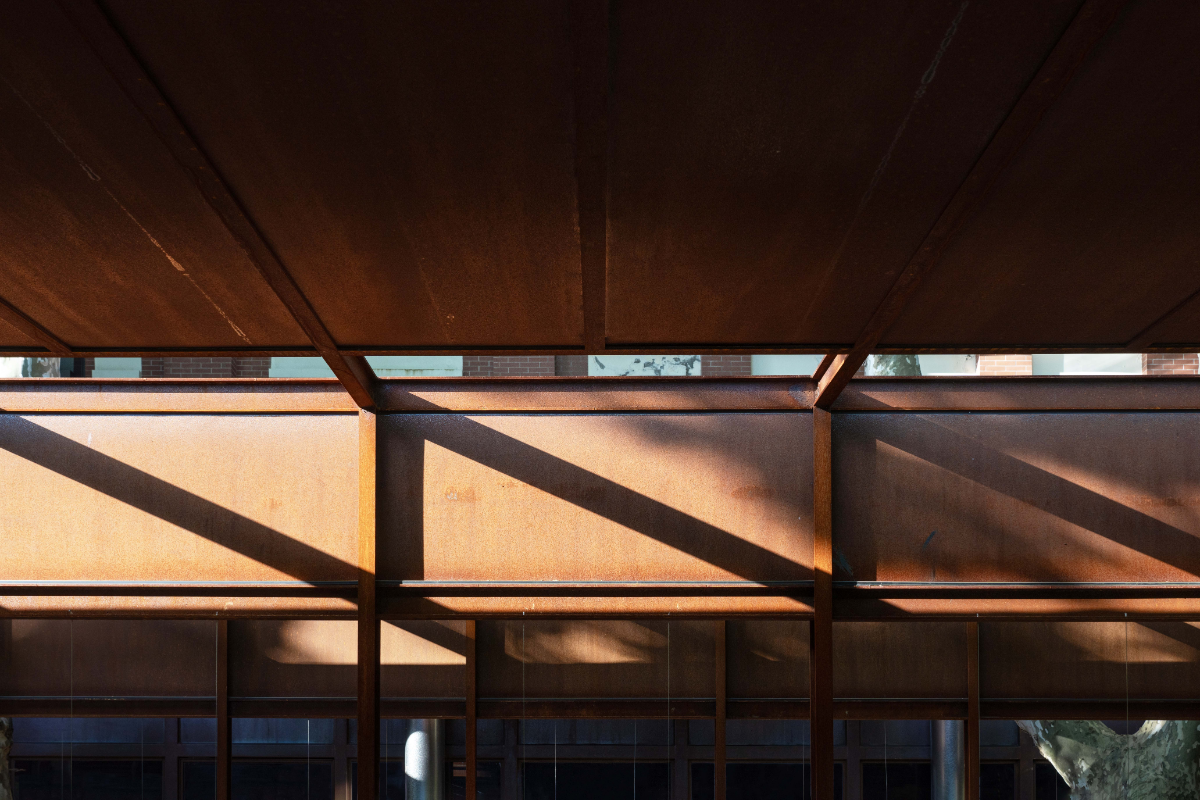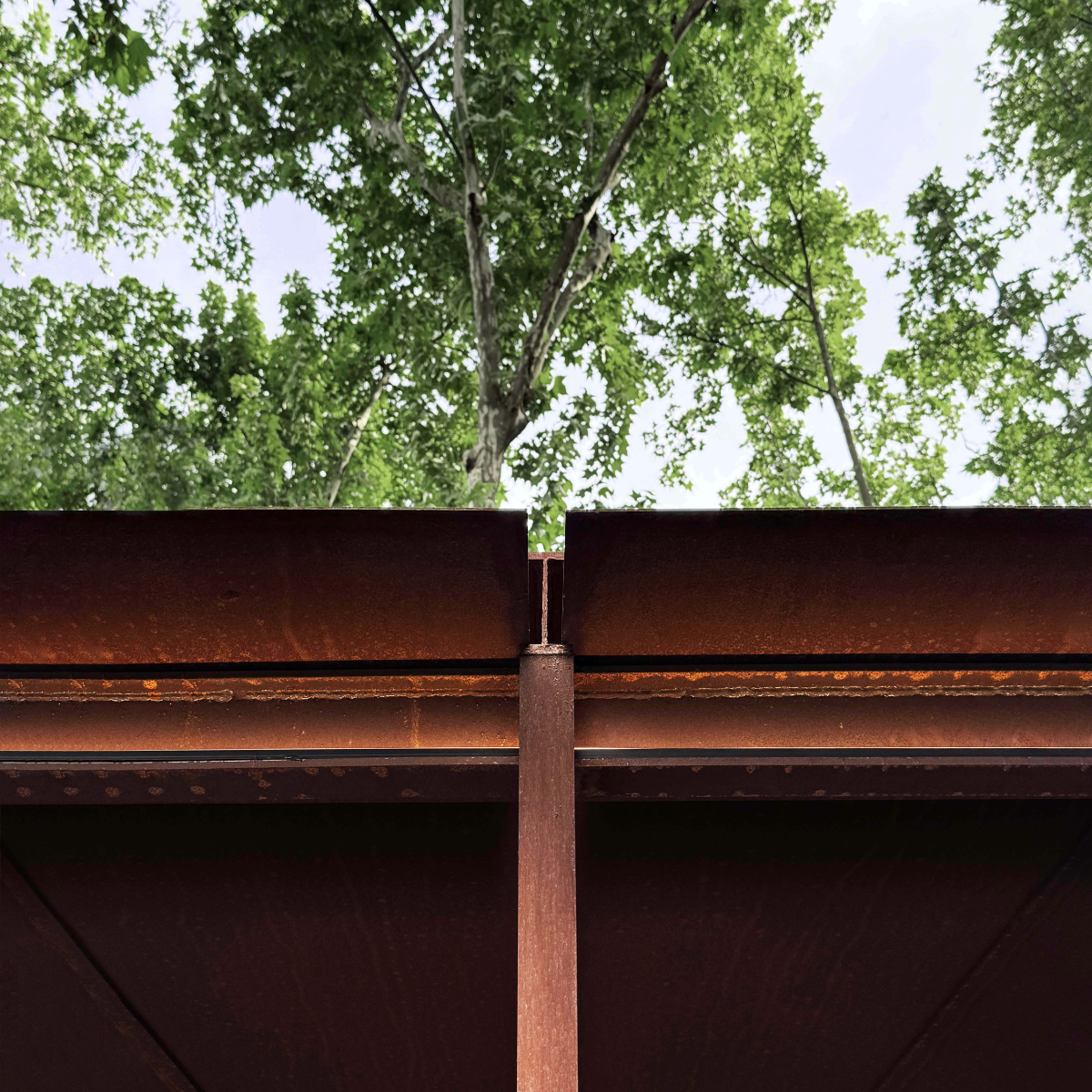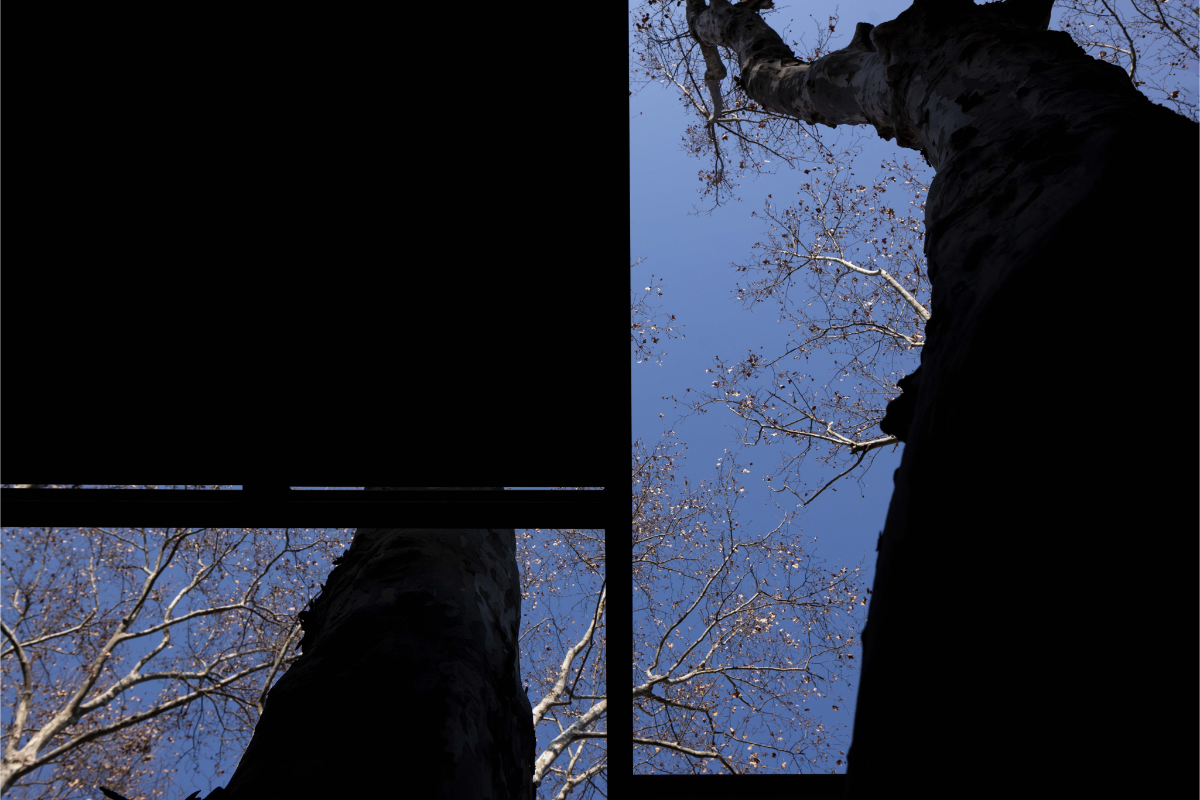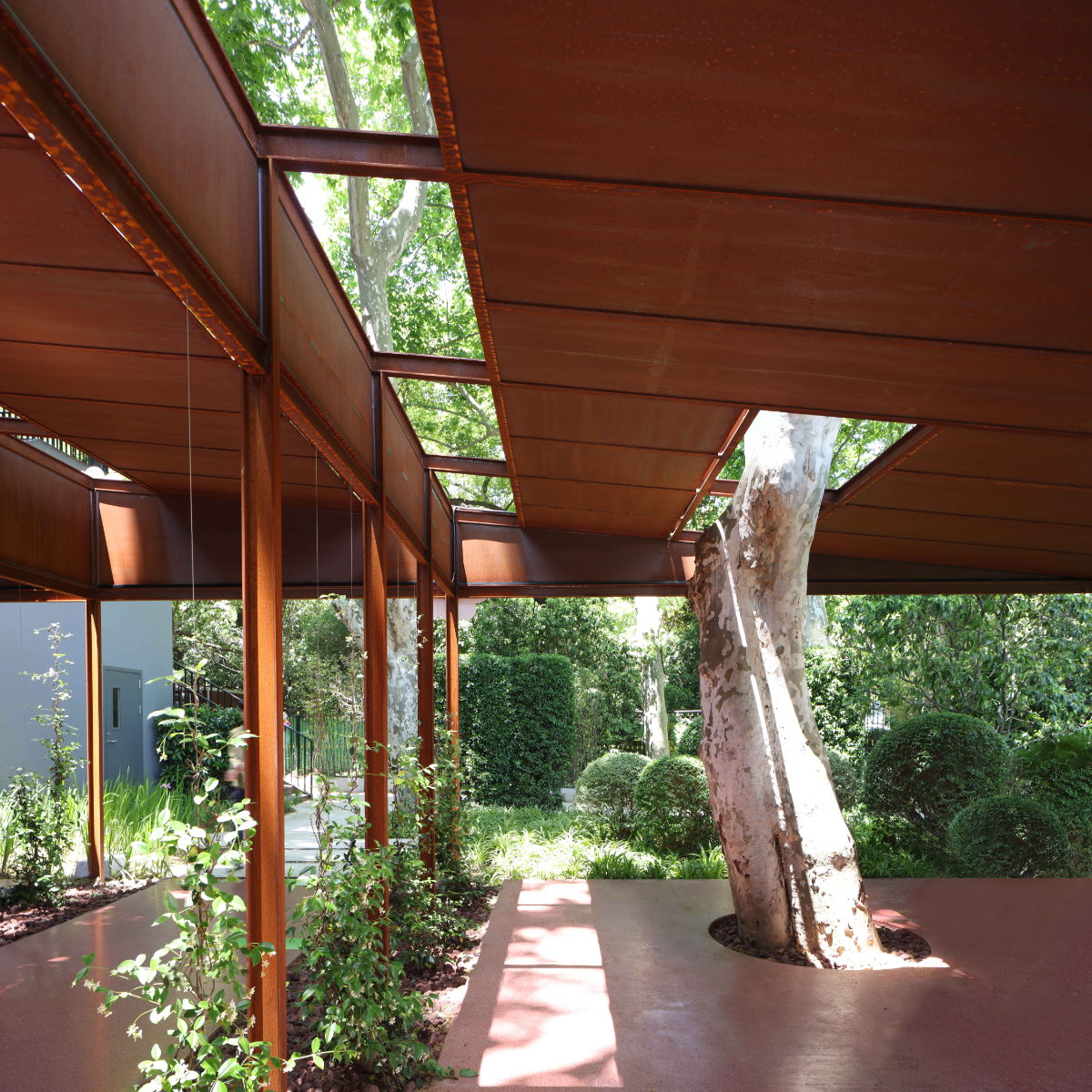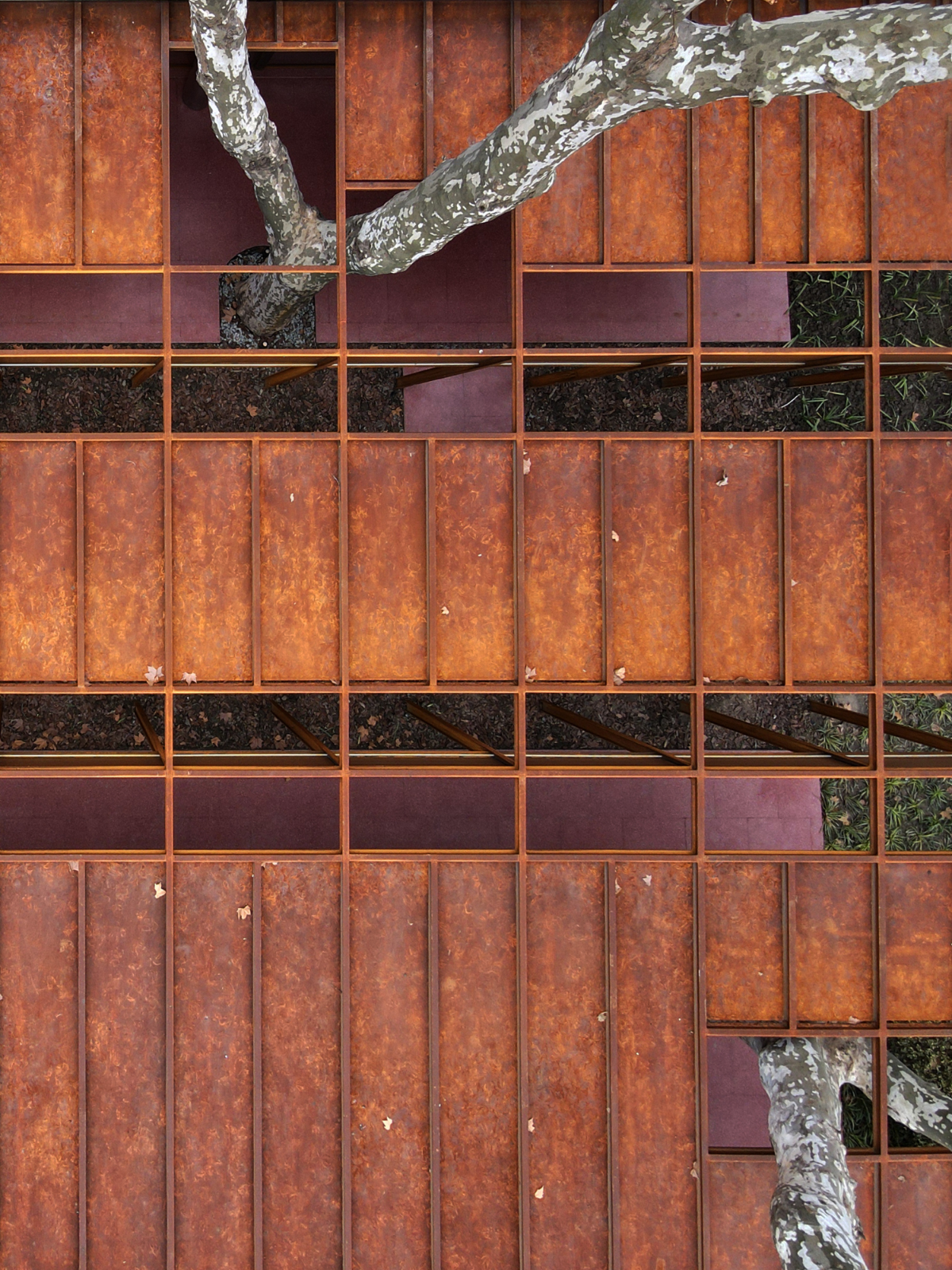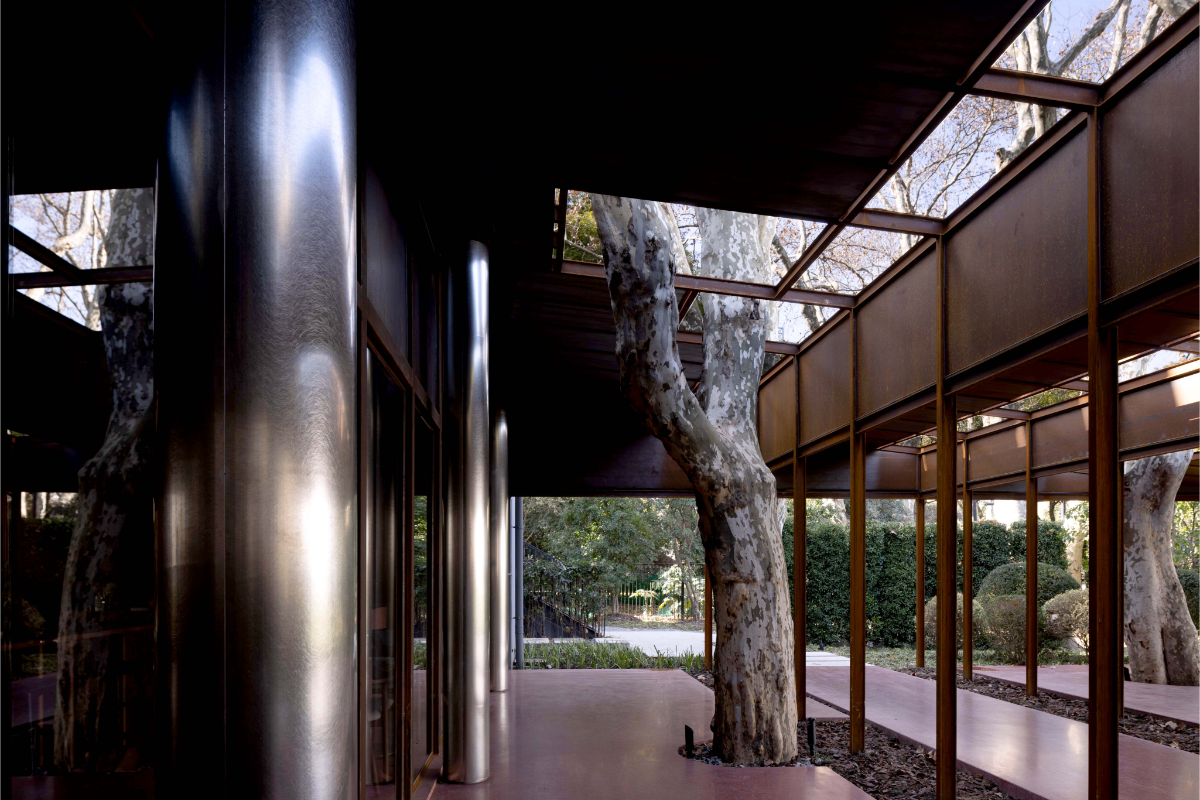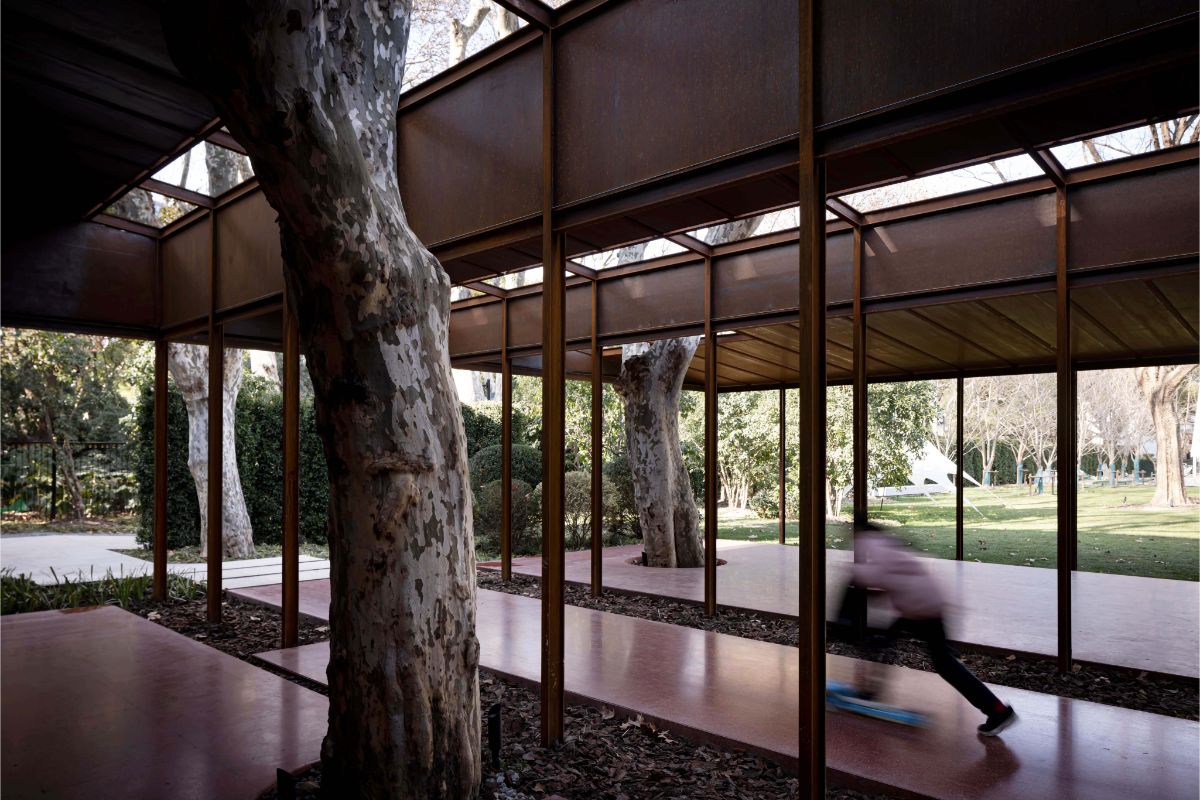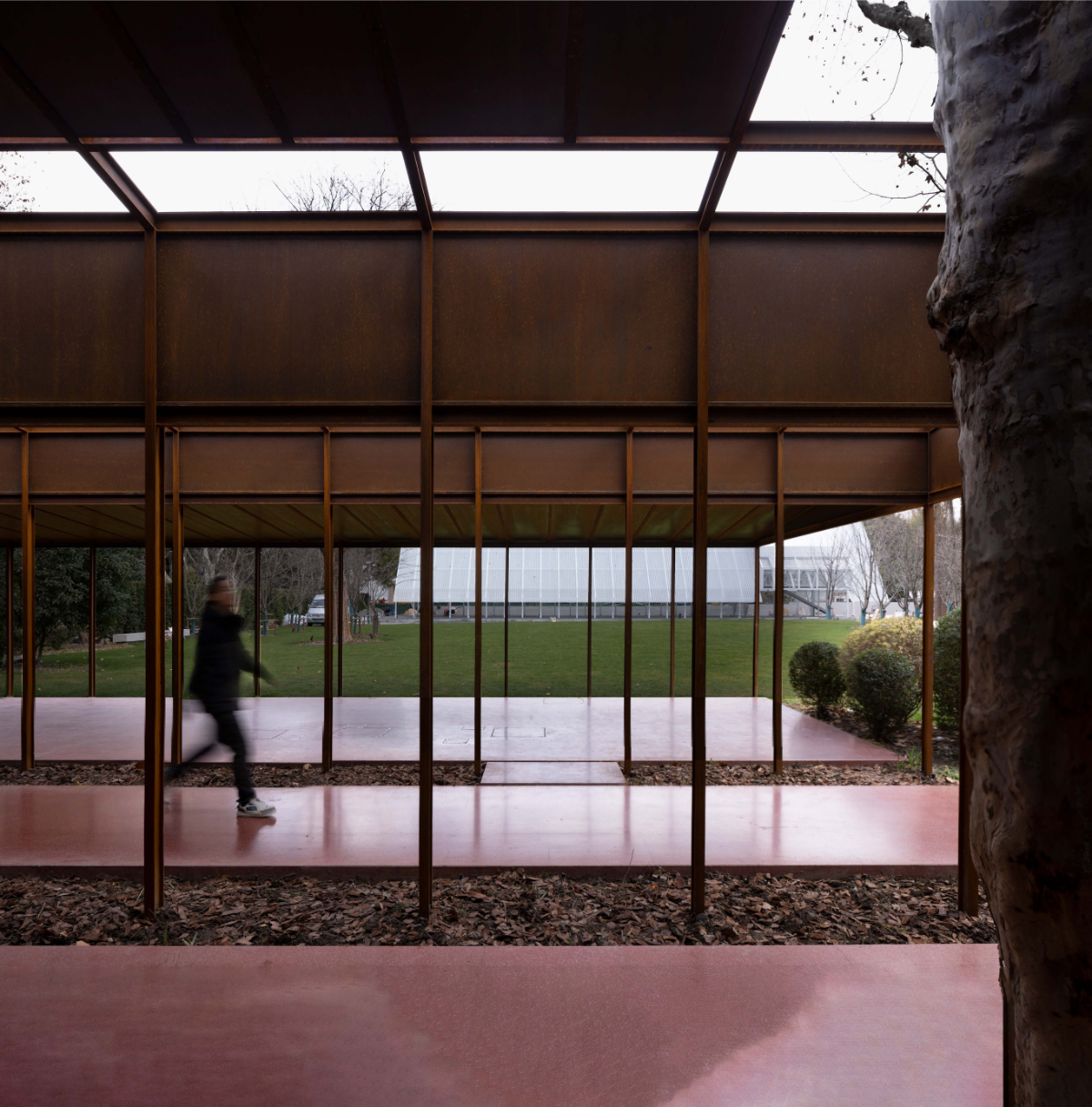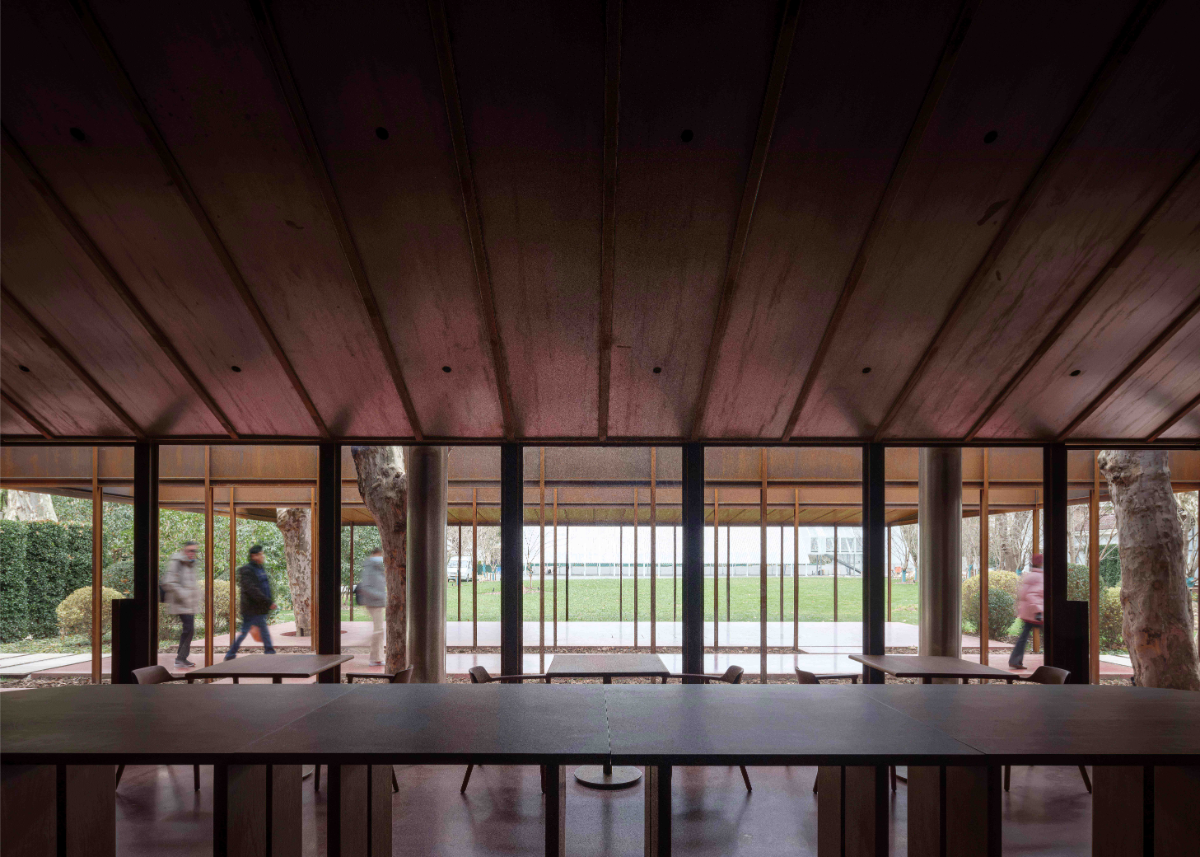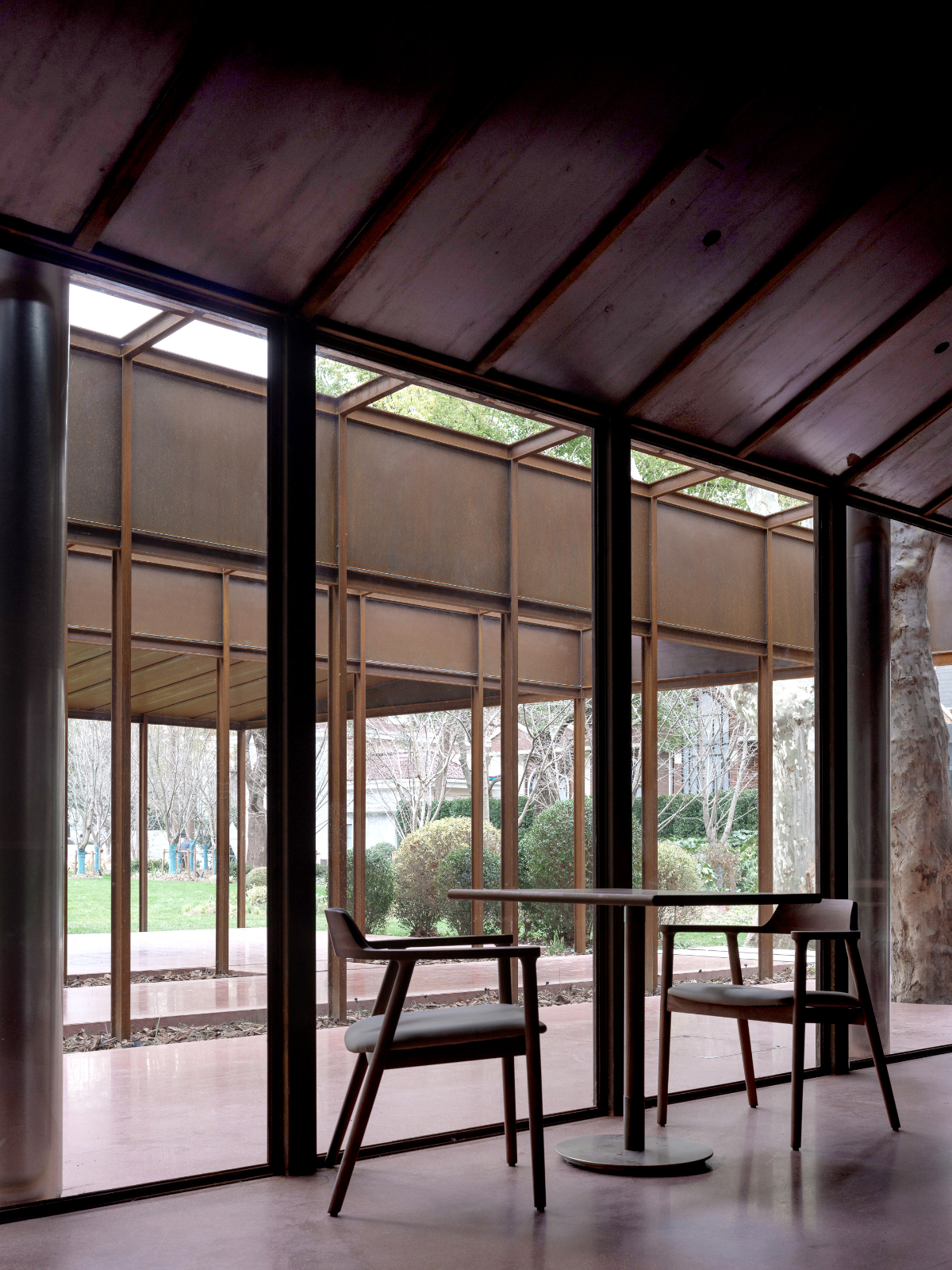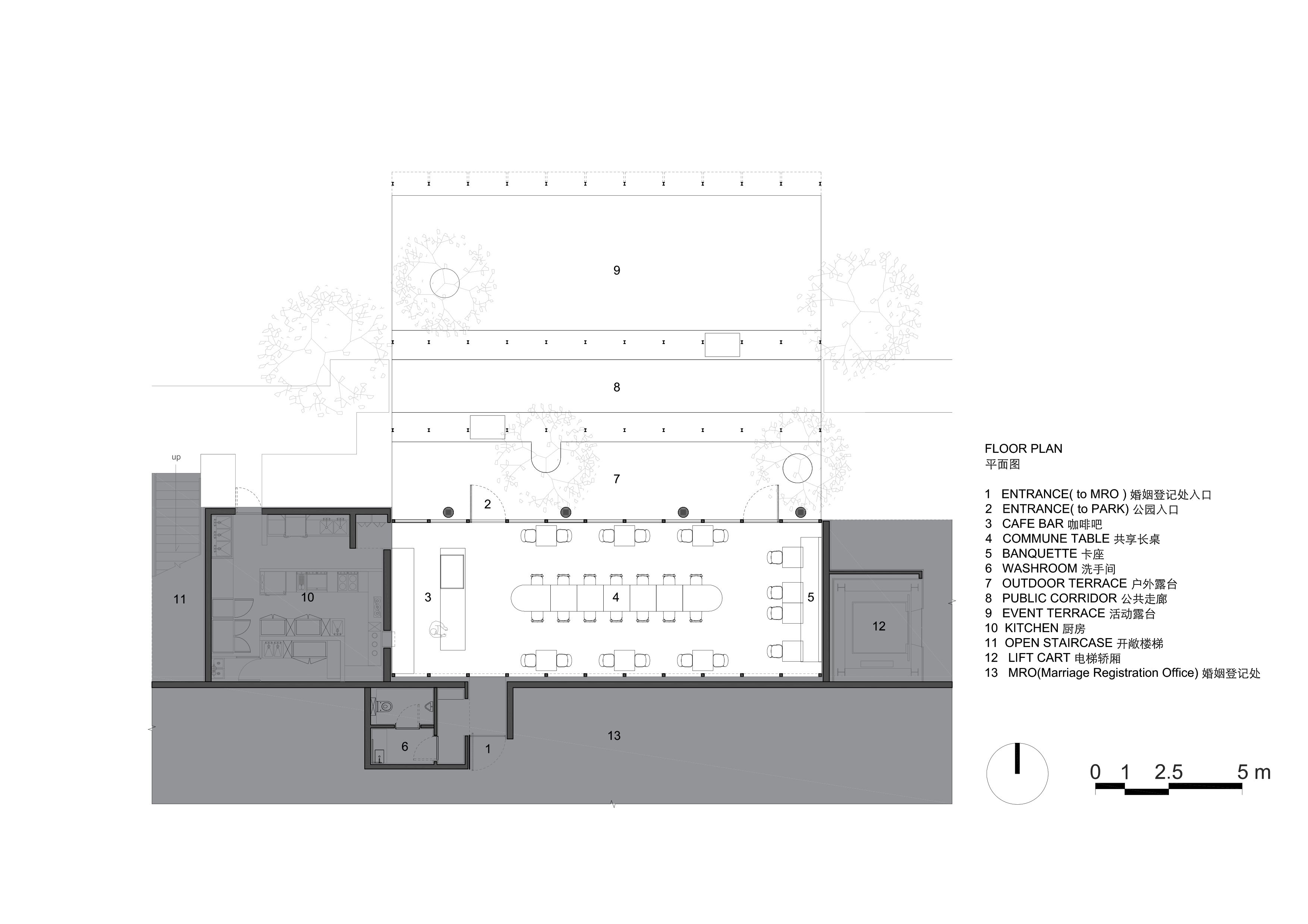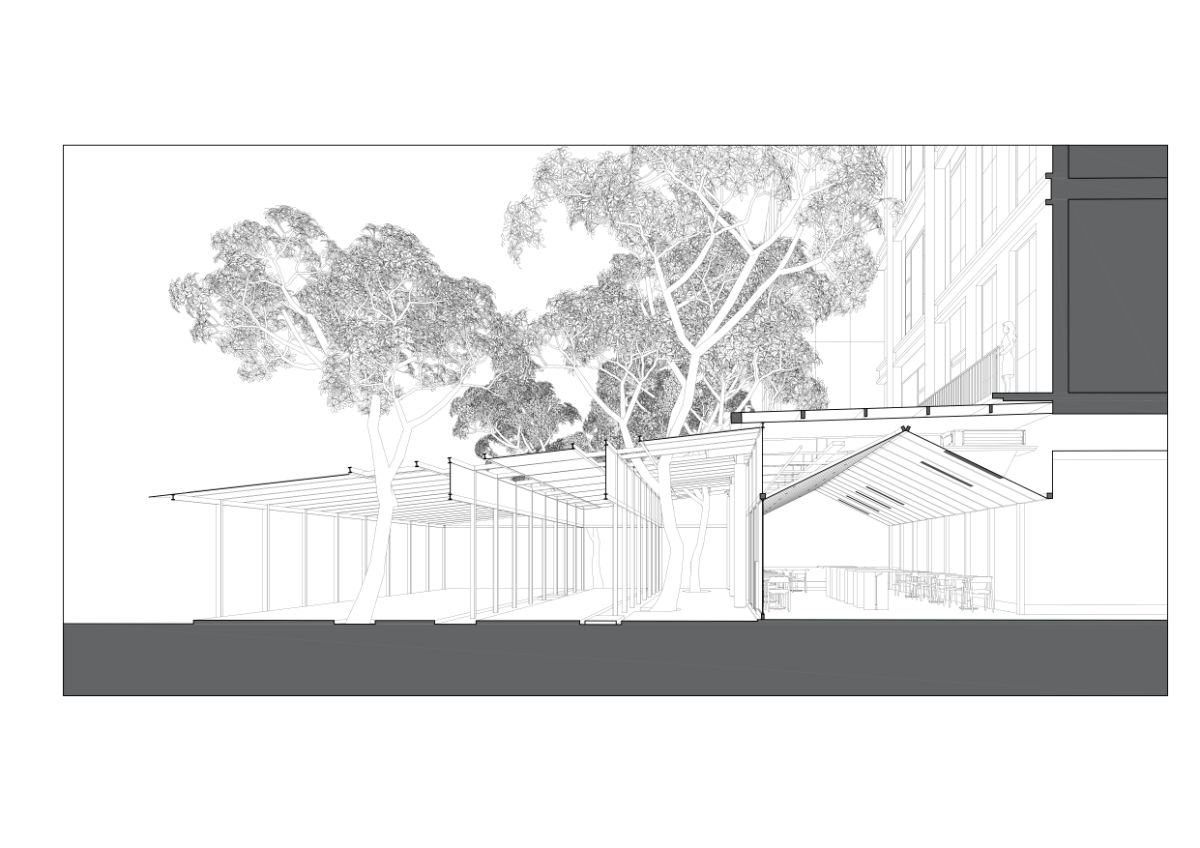Located on a commercial street corner adjacent to Lu Xun Park, the Coffee Shed responds to a complex set of conditions: an existing canopy with a glass roof attached to the main building that cannot be removed, and five trees irregularly scattered across the site. Rather than viewing these constraints as limitations, the project embraces them as opportunities, exploring how architecture can negotiate with the natural environment without imposing on it.
The design is conceived as a shelter that blurs the boundary between indoors and outdoors, evoking an abstract forest where the architectural structure engages with the existing trees. The positions of the steel columns were carefully calculated to avoid interfering with the trunks and root systems, demonstrating how architecture can coexist in active symbiosis with natural elements, without resorting to cutting or removal.
Weathering steel serves as a unifying material language that connects the interior and exterior spaces. Inside, the shape of the roof is driven by functionality rather than formal aesthetics: the triangular cavities between the new structure and the existing one create discreet spaces to house technical equipment. Outside, the roof folds and descends gradually, directing the gaze towards the distant park landscape, fostering a seamless visual connection with the surroundings.
The red terrazzo floor, floating like a raised platform, invites free activity and interaction. The entrance to the interior is subtly concealed within the matrix of steel columns, heightening the sense of discovery as one moves through the space.
As visitors wander through the Coffee Shed, the interplay between the artificial and the natural becomes evident, dissolving the boundaries between them. The orderly grid of the steel framework reflects the rationality of human intervention, while the organic placement of the trees disrupts this order, creating a tension that makes the architecture feel more alive and responsive. What begins as a rigid structural framework transforms into something organic, shaped by both design intent and the contingencies of the site.
The Coffee Shed at Lu Xun Park offers a compelling reflection on how architecture can deepen its relationship with nature. As Mies van der Rohe once said, “We should attempt to bring nature, houses, and human beings together in a higher unity.” This project exemplifies that vision, demonstrating how architecture can evolve alongside nature—neither dominating it nor yielding to it.

